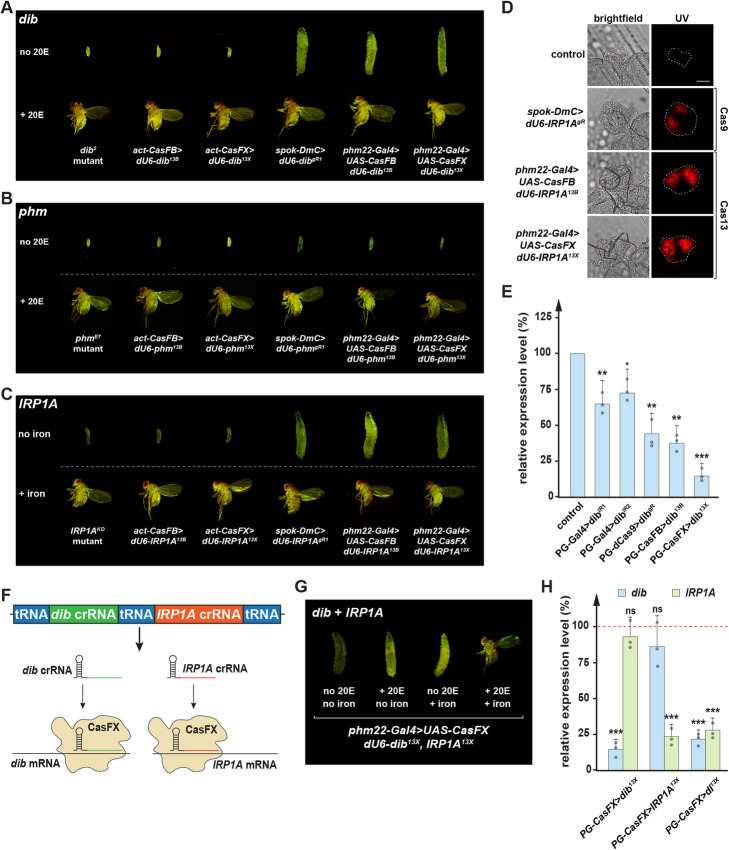Fig. 6.
Efficiency of Drosophila codon-optimized CRISPR/Cas13 in vivo. a Comparison of phenotypes from a classic disembodied mutant (dib2), ubiquitous knock-down of dib via CasFB/dib13B, CasFX/dib13X, prothoracic gland-specific manipulation via CRISPR/Cas9, or Cas13 of dib in the presence or absence of 20-Hydroxyecdysone (20E). b Comparison of phenotypes from a classic phantom mutant (phmE7), ubiquitous knock-down of phm via CasFB/phm13B, CasFX/phm13X, PG-specific manipulation via CRISPR/Cas9, or Cas13 of phm in the presence or absence of 20-Hydroxyecdysone (20E). c Comparison of phenotypes from a classic iron regulatory protein 1 mutant (IRP1AKO), ubiquitous knock-down of IRP1A via CasFB/IRP1A13B, CasFX/IRP1A13X, PG-specific manipulation via CRISPR/Cas9, or Cas13 of IRP1A in the presence or absence of iron in the diet. d Porphyria phenotype in PG-specific IRP1A knock-down. Scale bar = 250 μm. e Relative dib expression levels in samples representing different PG-specific loss-of-function strategies, including RNAi (IR), dCas9-mediated transcriptional interference, and Cas13 cleavage. Ring glands were dissected from larvae at 42 h after the L2/L3 molt. * = p value < 0.05, ** = p value < 0.01, *** = p value < 0.001, ns = not significant, p values based on Dunnett’s post hoc test, error bars represent 95% confidence intervals. f Schematic of a construct containing two crRNAs simultaneously targeting dib and IRP1A mRNA. g Comparison of phenotypes from PG-CasFX/dI13X in the presence or absence of either 20E, iron, or both. h Relative expression levels of dib and IRP1A in single or double knock-down PG samples. Data were normalized to the expression of these genes in controls. Ring glands were dissected from larvae at 42 h after the L2/L3 molt. * = p value < 0.05, ** = p value < 0.01, *** = p value < 0.001, ns = not significant, p values based on Student’s t tests, error bars represent 95% confidence intervals

